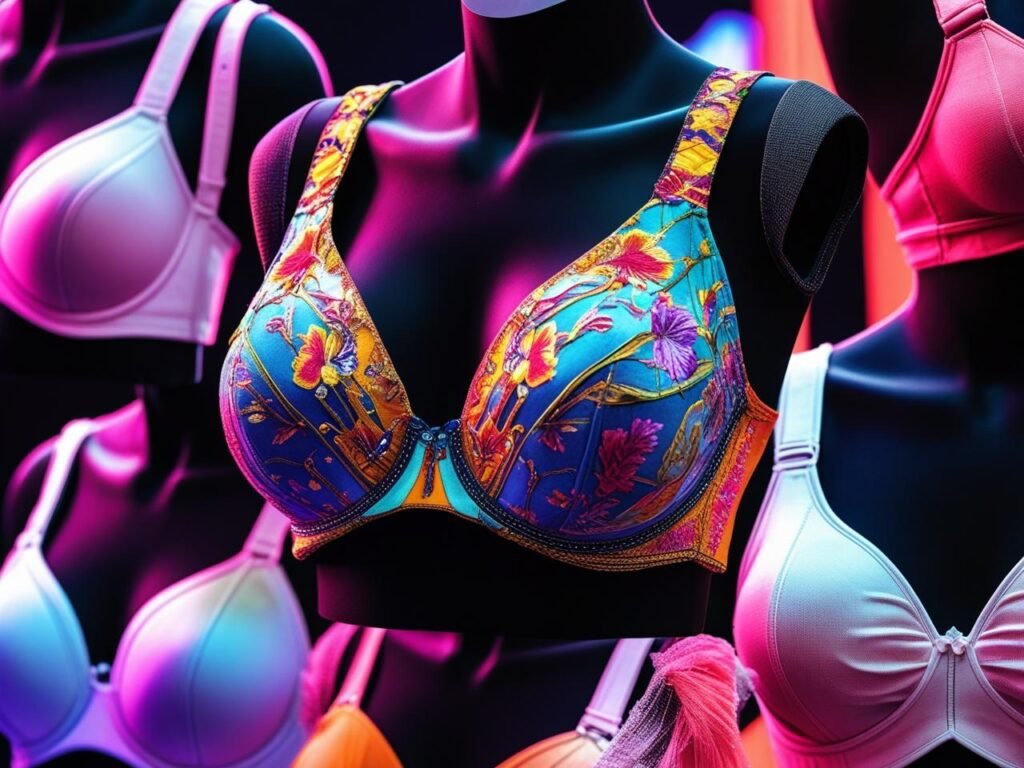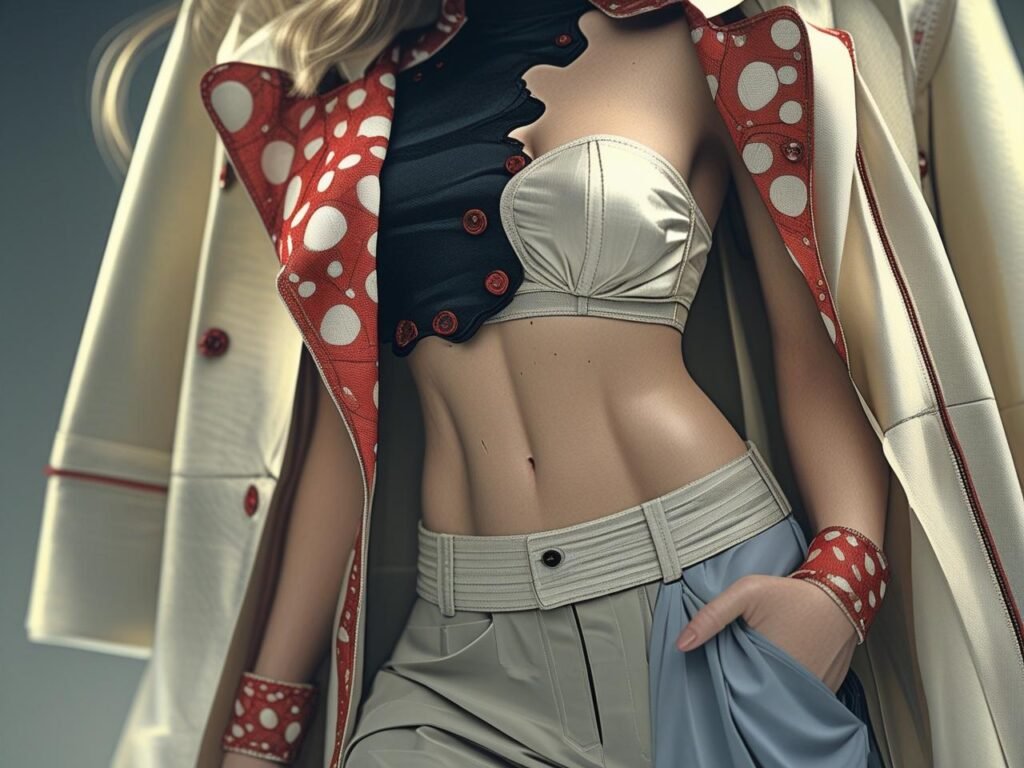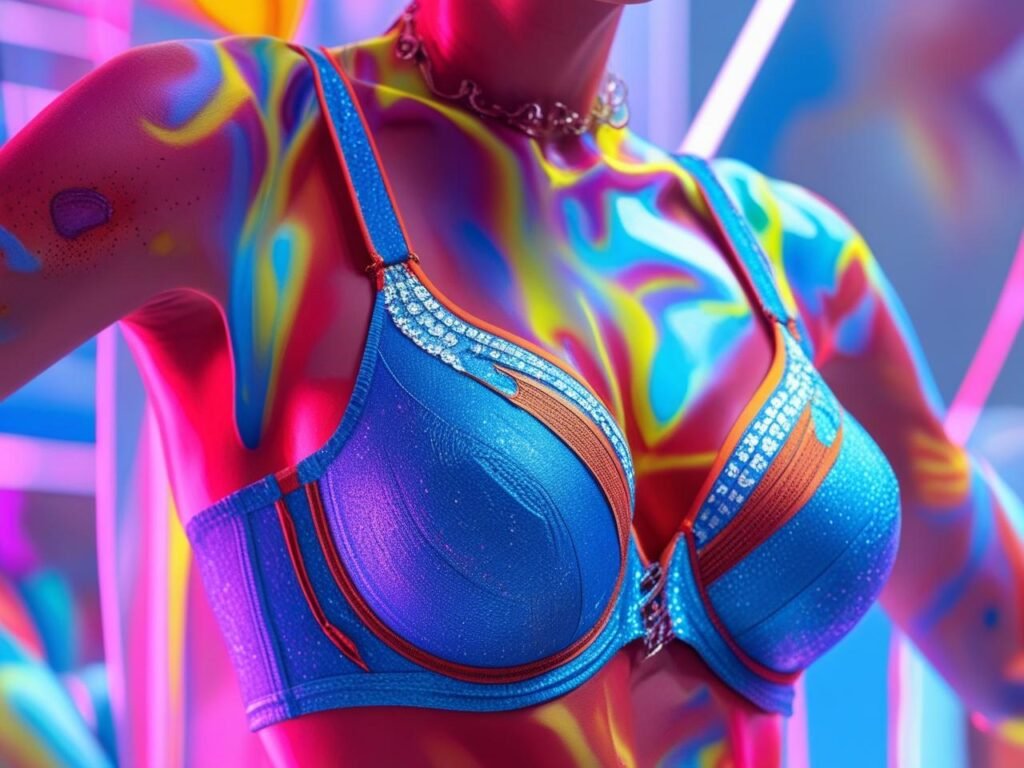Once tucked quietly beneath layers of clothing, bras are now taking center stage in fashion—and not just in the traditional sense. No longer confined to their original purpose of support or seduction, the modern bra has been reborn as a bold, expressive, and sometimes subversive garment. From runways in Paris to red carpets and pop culture performances, the humble bra is having a high-fashion renaissance—challenging gender norms, redefining femininity, and inviting playful self-expression.
The Bra as Art and Commentary
Recent runway shows have made it clear: bras are no longer just underwear. At Vaquera’s latest show in Paris, a passing glance might mistake a model’s oversized silk ensemble for a dramatic sash or skirt. But on closer inspection, the piece revealed itself to be a sculptural, exaggerated bra—complete with straps, cups, and hook-and-eye closures. Another look turned padded bra cups into the hip panels of a voluminous skirt.
This transformation from functional undergarment to exaggerated symbol is part of a broader trend. Designers are playing with bras not just as garments, but as cultural commentary. Miu Miu recently brought back the 1950s bullet bra, presenting it under prim sweaters worn by models styled like retro secretaries. It was cheeky, sharp, and loaded with meaning. As Miuccia Prada mused backstage: “Do we need femininity in this moment to lift us up?”—a question that felt both philosophical and provocatively literal.

A Revival of Power and Play
Across the globe, designers are using the bra as both a literal and metaphorical framework for fashion storytelling. In London, Simone Rocha added fuzzy bras over leather jackets, blending softness with edge. Sarah Burton’s debut for Givenchy layered sheer dresses over lingerie-style silhouettes. Even Chanel took part, sending out skirt suits with visible bras styled underneath.
These aren’t your standard bras. They’re monumental, playful, aggressive, and humorous—sometimes all at once. Duran Lantink’s bright red bra, which resembled Minnie Mouse ears, blurred the line between costume and couture. The fashion industry, it seems, is treating the bra as an evolving language: a means of expression, rebellion, and redefinition.
Beyond the Male Gaze
Historically, bras have been closely tied to traditional ideas of femininity—often designed to shape the body into a form that pleases the male gaze. Think Marilyn Monroe in her hourglass bullet bras, or the Wonderbra campaigns of the ’90s, headlined by a sultry Eva Herzigova with the tagline “Hello Boys.”
But today’s bra moment isn’t about seduction—it’s about reclamation. “This is not about needing support,” says Vaquera co-designer Patric DiCaprio. “It’s about what the bra symbolizes.” The label’s exaggerated pieces are meant for anyone, regardless of gender identity or body type. Co-designer Bryn Taubensee adds, “We want wearers to feel powerful and elegant.”
The goal isn’t to mimic traditional beauty standards—it’s to own your space, and sometimes, to confront viewers with a visual that’s impossible to ignore. These bras don’t hide under clothing—they demand attention.

Feminism, Then and Now
The bra has always been a lightning rod for conversations around gender and power. During the women’s liberation movement of the 1960s and ’70s, the idea of “bra burning” became a symbolic rejection of patriarchal expectations—even if the actual event was more myth than fact.
Later, in the 1980s and ’90s, punk and pop icons flipped the script. Vivienne Westwood’s runway shows featured bras worn over clothing, a middle finger to convention. Jean Paul Gaultier’s cone bra, famously worn by Madonna during her Blonde Ambition Tour, became a symbol of unapologetic sexual agency.
But somewhere along the way, rebellion gave way to retail. The Victoria’s Secret era commercialized the bra as fantasy, shifting the narrative back to sex appeal—albeit through the lens of consumer choice. Gel pads, push-up foam, and sculpting cups promised to enhance, conceal, or perfect, rather than empower.
The Post-Pandemic Rebirth
The pandemic era ushered in a shift toward comfort—athleisure and bralettes replaced structured bras, and lingerie lost some of its luster. But as the world reemerges, so too has the bra—only now it’s freed from function.
Today’s bra isn’t worn because it “has” to be. It’s worn because it can be. It’s worn outside clothes. It’s worn oversized, bejeweled, or feathered. It’s part of an outfit—not what’s hidden underneath.
Take musician Doechii, for example. During her Grammys performance, she appeared onstage in a simple white bra and briefs set, paired with loafers by Thom Browne. It wasn’t overtly sexual—it was a moment of confidence, stripped of pretense. Her stylist Sam Woolf put it best: “It’s about the way you carry yourself. It’s not about a sexualized body. It’s about art.”
Between Parody and Power
This current bra wave thrives on ambiguity and contrast. One moment it’s a parody of femininity—an exaggerated, campy joke. The next, it’s a badge of strength. When Jeff Bezos’s fiancée, Lauren Sanchez, appeared at a national ceremony in a white suit with a lacy push-up bra exposed beneath, reactions were mixed. Was it empowerment? A fashion faux pas? A cultural flashpoint?
Compare that with the likes of Kristen Stewart or Doechii wearing lingerie-inspired pieces on the red carpet—not to provoke, but to express. The difference lies in intention. Are you wearing it to be seen by others, or to reflect how you see yourself?
Saying “Hello” Again—On Your Terms
The fashion world may have moved on from the “Hello Boys” era, but it hasn’t left bras behind. Instead, it’s offering a more nuanced invitation to explore their meaning—whether that means styling them over T-shirts, wearing them two sizes too big, or choosing not to wear one at all.
Valerie Steele, director of the Museum at FIT, sees the latest trends as both satire and empowerment. “If you had breasts this big,” she says of the Vaquera show’s oversized designs, “you’d scare the shit out of these men.” These bras are loud, attention-grabbing, and unapologetic. They ask to be seen—and that’s the point.

